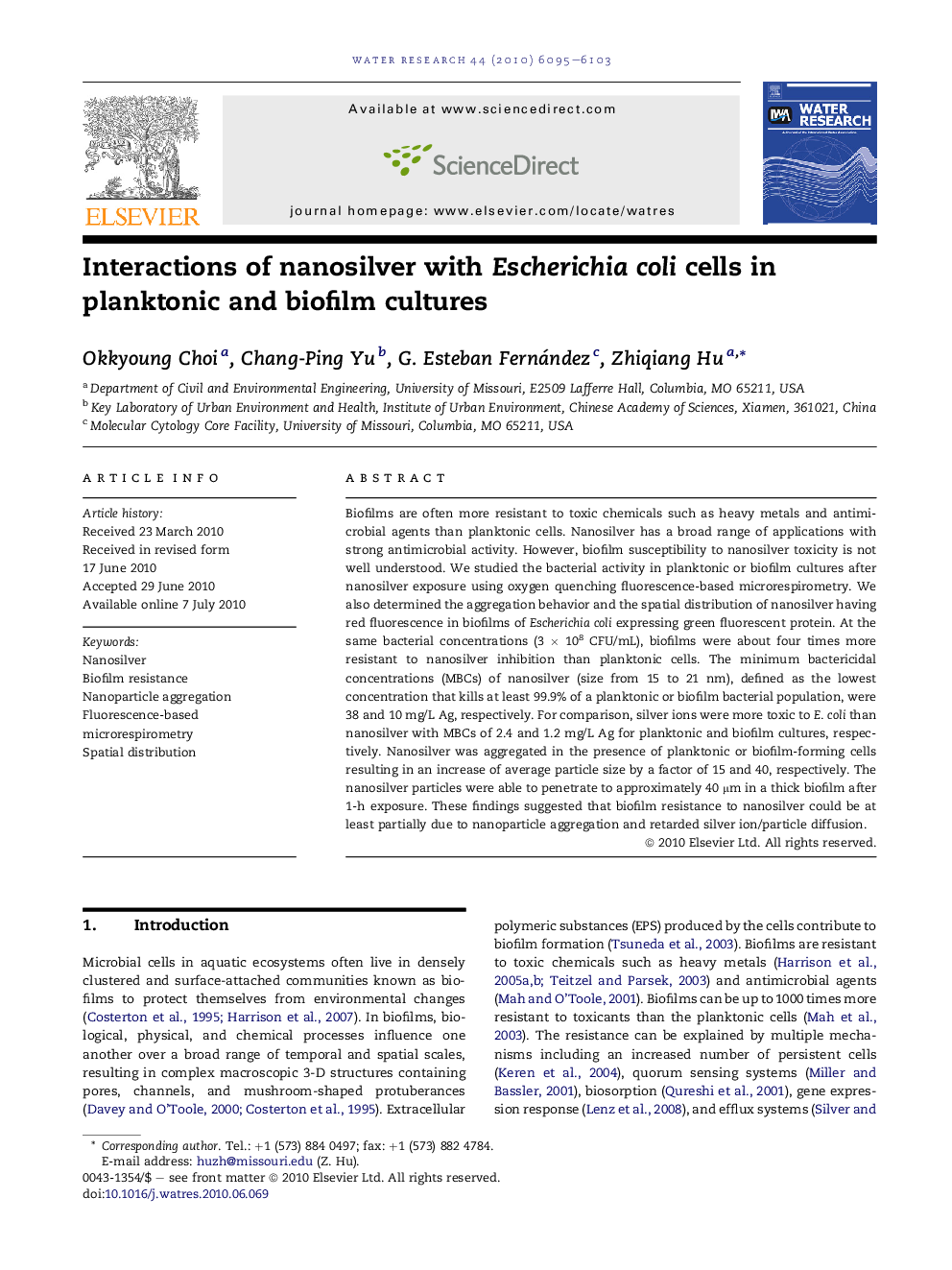| Article ID | Journal | Published Year | Pages | File Type |
|---|---|---|---|---|
| 4483698 | Water Research | 2010 | 9 Pages |
Biofilms are often more resistant to toxic chemicals such as heavy metals and antimicrobial agents than planktonic cells. Nanosilver has a broad range of applications with strong antimicrobial activity. However, biofilm susceptibility to nanosilver toxicity is not well understood. We studied the bacterial activity in planktonic or biofilm cultures after nanosilver exposure using oxygen quenching fluorescence-based microrespirometry. We also determined the aggregation behavior and the spatial distribution of nanosilver having red fluorescence in biofilms of Escherichia coli expressing green fluorescent protein. At the same bacterial concentrations (3 × 108 CFU/mL), biofilms were about four times more resistant to nanosilver inhibition than planktonic cells. The minimum bactericidal concentrations (MBCs) of nanosilver (size from 15 to 21 nm), defined as the lowest concentration that kills at least 99.9% of a planktonic or biofilm bacterial population, were 38 and 10 mg/L Ag, respectively. For comparison, silver ions were more toxic to E. coli than nanosilver with MBCs of 2.4 and 1.2 mg/L Ag for planktonic and biofilm cultures, respectively. Nanosilver was aggregated in the presence of planktonic or biofilm-forming cells resulting in an increase of average particle size by a factor of 15 and 40, respectively. The nanosilver particles were able to penetrate to approximately 40 μm in a thick biofilm after 1-h exposure. These findings suggested that biofilm resistance to nanosilver could be at least partially due to nanoparticle aggregation and retarded silver ion/particle diffusion.
